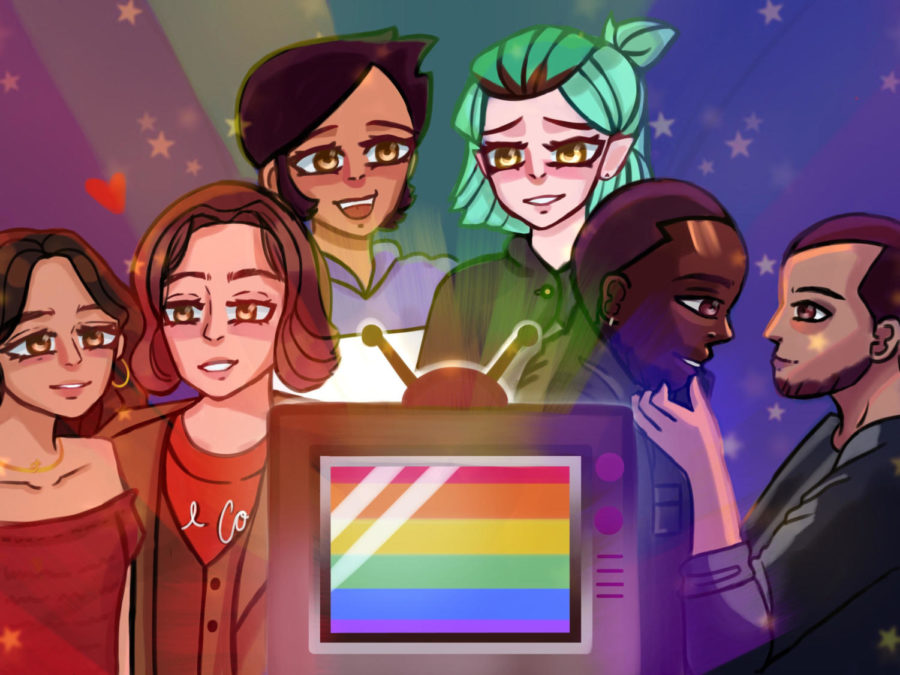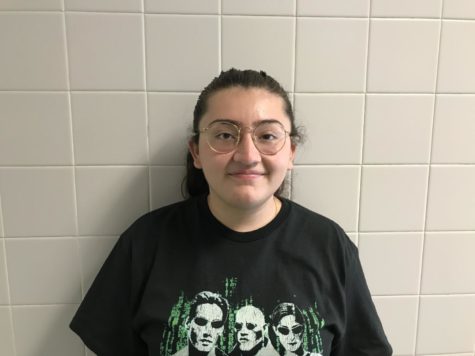Television characters represent LGBTQ+ community
typical’s Cassie and Izzie, alongside the MCU’s Phastos and Ben and The Owl House’s Luz and Amity, are just a few queer characters emerging in new media.
February 9, 2022
“Glee.” “Modern Family.” “Queer Eye.” “Riverdale.” “Sex Education.” “Young Royals.” “Euphoria.” Overall, LGBTQ+ representation has been steadily increasing this past decade. According to GLAAD’s “We Are On TV Report,” 9.1% of primetime scripted programming contained LGBTQ+ characters from 2020-2021.
“I think that a lack of queer visibility and representation affects everyone, LGBTQ+ or not,” freshman Liam Weatherup said. “When people aren’t made aware of the problems, they can’t help fix them. So when people are informed about the issues that others are experiencing, they can at least try to be better allies.”
Coming-of-age shows that present these topics may allow LGBTQ+ youth to understand themselves and feel included. These are some recent examples of representation in popular shows.
Atypical (2017-2021)
The Netflix series “Atypical” focuses on Sam, a teenage boy with autism, and how he navigates high school, relationships, family and growing up. His track star sister Casey must contend with her newfound feelings for her friend Izzie and her straining relationship with her boyfriend Evan.
Freshman Mars Barry’s favorite gay representation is ‘Atypical’ because of its realism.“I’m pansexual, so I didn’t know about that [identity] until doing a lot of research, and when I first saw [‘Atypical’], I was really glad because I had never seen [that representation] before,” Barry said.
Both athletic scholarship students at a private school, Casey and Izzie start off on the wrong foot. Casey’s relationship with her boyfriend Evan ends, and Casey and Izzie spend some time pushing each other away until they finally decide to be together. “Atypical” portrays their relationship as a discovery of experiencing queerness as opposed to how being queer affects the status quo.
At the end of the series, Sam continues going to college and Casey is left considering future college track plans
The Owl House (2020-)
“The Owl House,” a Disney+ animated fantasy series, follows Luz, an eccentrically geeky teenage girl who feels she doesn’t fit in with society. She accidentally discovers a portal that leads her to a magical realm filled with adventures, witches and wizards. She strives to learn magic and become a witch alongside her peers.
While Luz adjusts her new home in the realm, the Boiling Isle, she meets fellow student Amity at Hexide School of Magic. Their friendship doesn’t begin on the best terms; Amity sees Luz as a competitor to impede her goals, as she is held to high standards at Hexide. Their relationship eventually blossoms when she opens up to Luz, realizing they have more in common than she thought and mutual feelings arise. Dana Terrace, the creator of the show, confirmed Luz and Amity to be bisexual and lesbian during a Reddit Q&A.
“I love how [The Owl House] is targeted towards a younger audience, so [kids] don’t grow up thinking ‘wow I don’t know what this is that I feel’,” junior Sammy Smith said. “They have something to look at [that represents them].”
The increasing LGBTQ+ representation on television has also included characters of other identities: Raine, a non-binary character, is also featured in The Owl House.
“Representation exposes people to a lot of the LGBTQ+ community,” senior Anabel Moya said. “For example, using [LGBTQ+] terms helps people familiarize themselves [with] the community more and helps them be a better ally to the people in their life that might be going through similar things. Also, I would like to see more people of color representing the LGBTQ+ community on TV because it is usually white individuals.”
Loki (2021-)
After dying several times in the Marvel Cinematic Universe (MCU), Loki’s past self finds himself under the control of the Time Variance Authority (TVA). He must use his wits to escape or find a way to take control of the organization. “Loki” is available to Disney+.
“I watch Marvel movies, and Loki is my favorite character,” Smith said. “I know [in mythology] he is pansexual and gender fluid. [However,] Marvel does not have enough representation.”
The MCU has been mostly absent of LGBTQ+ characters on the screen despite a flurry of LGBTQ+ characters in the comics such as America Chavez, Hulkling and Wiccan. However, Phastos, a gifted inventor from “The Eternals,” has a family with his husband Ben.
Loki was revealed to be non-straight in the Loki series, but only through a single-line statement. His gender fluidity is revealed not only through the arrival of himself in a different timeline, Sylvie, but also through a teaser listing his sex as “fluid.”




